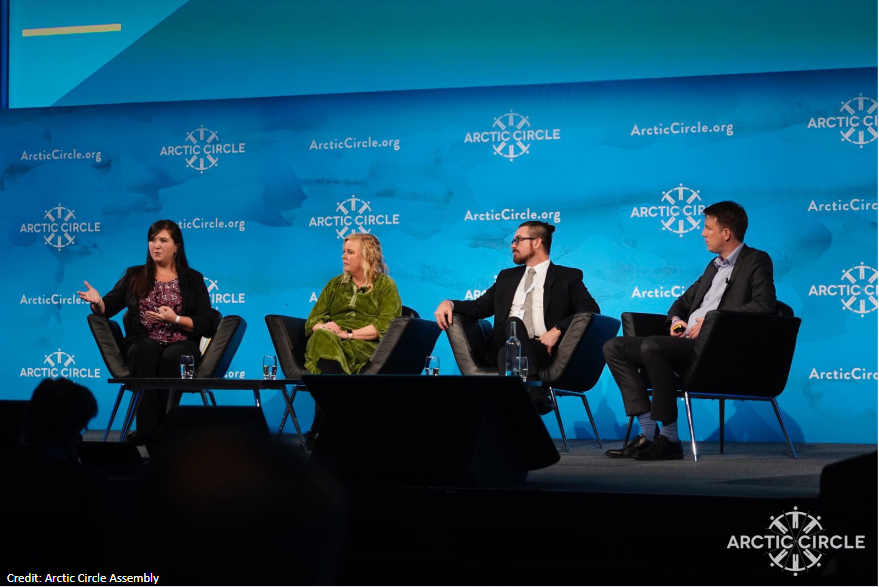
Understanding Climate Change Through a Digital Twin of the Arctic Ocean
There will be a growing demand for Arctic seafood as a low-carbon protein source as the middle-class population in cities around the world grows. Climate change is already impacting ocean ecosystems and altering fish stocks, requiring adaptation from regulatory agencies and the fishing industry. Forecasting the climate change impacts on fishery stocks and helping ships to safely navigate the changing waters would optimise fishery output. The solution might be to have a digital twin of the ocean, and that is precisely what the company PolArctic is developing.
Improving the Arctic fish stock management
The Arctic is the region of the world the most affected by climate change. The summer sea ice is disappearing and the snow crab population collapsing in Alaskan waters highlights the increasing pressure on the Arctic Ocean and the need to improve the management of its resources.
Using Artificial Intelligence (AI) and Machine Learning (ML), the Alaskan woman-led start-up PolArctic is working to find solutions on how to adapt to those critical environmental challenges. Combining various data sources, the company will develop the first digital twin of the Arctic Ocean to drastically improve fisheries resource management. To do so, the project will provide the first forecast of climate change impacts on the Arctic fish stocks. This virtual model of the Arctic Ocean could increase fishing industry profits while simultaneously raising the total fishing biomass. This will make fishing not only more efficient but also more sustainable.
“To protect and preserve the environment, we need to understand it. PolArctic’s virtual ocean project offers an innovative solution for the sustainable economic development of the Arctic. A deeper understanding of the ocean ecosystems will provide the necessary and reliable knowledge for the commercial fishing sector and could benefit other sectors as well,” explains Mads Qvist Frederiksen, executive director of the Arctic Economic Council.
The PolArctic’s digital twin project responds to the double challenge of supporting a pressured fishing industry while at the same time improving the sustainable management of fish stock. The digital twin of the Arctic Ocean will increase the understanding of climate change impacts on species biomass, optimise catch limits and create dynamic protected areas to open more oceans for fishing. To achieve this modelling level, PolArctic brings together new scientific data, traditional knowledge, and cutting edge artificial intelligence technology.
Merging artificial intelligence and Indigenous people knowledge
The PolArctic’s digital twin will integrate unique multiscale information in a novel and unprecedented way. It will combine traditional indigenous knowledge, data science, ocean modelling, and advanced artificial intelligence to create individuals with unique behaviours in simulated ocean habitats.
“The project explores various data sources that highlight the value of including artificial intelligence and traditional knowledge from indigenous people, who have a deep understanding of their environment. Often positioned as if artificial intelligence and indigenous culture were in conflict with each other, the project achieves a level of success that would not be possible without the benefit of both,” explains Leslie Canavera, CEO of PolArctic.
The virtual simulations will enable PolArctic to concretely visualise the ecosystem characteristics and the fish stocks in different ocean areas. It will indicate the emergence of new phenomena such as acidification, temperature changes, illegal fishing, and predator-prey interactions. The model will support precision-fishing techniques, increasing industry profits while simultaneously raising the total fish biomass by allocating fishing in regions of abundance and regeneration for schools and regions suffering overfishing or climate change impacts.
The Phase II of a successful project
The PolArctic’s digital twin is the continuation of a first project done in 2021 in the Inuit community of Sanikiluaq in Nunavut, Canada. The project was jointly funded by the Nunavut Fishery Association, Qikiqtaaluk Corporation, and WWF.
“It was through our participation in the Arctic Economic Council, Blue Economy Working Group, that we met the people from Nunavut. Training an artificial intelligence model on the community’s knowledge, we developed heat maps that the community could use to develop new commercial inshore fisheries and bolster food security in new locations. Building on this success, we are now expanding the project to a much larger scale,” explains Leslie Canavera, CEO of PolArctic.
The PolArctic’s digital twin could indeed reshape the fisheries resources management of the Arctic Ocean and involve various sectors.
A wide range of beneficiaries
The PolArctic’s digital twin model will benefit a large range of sectors in addition to the fishing industry, such as shipping, climate research, and defence. By increasing the accuracy and factors in marine models, the shipping industry can avoid hazards such as inclement weather, sea ice, or freezing spray. Knowing these navigational challenges in advance can support better routing and potential reductions in insurance premiums.
Concerning the defence, reporting the potential illegal, unreported, and unregulated (IUU) fishing trends by identifying the fish that are missing will also complete the Coast Guard mission.
Finally, supporting precision-fishing techniques will benefit the local arctic communities, subsistence activities, food security, as well as the Arctic Ocean ecosystems. PolArctic’s model will also support climate research for The Agreement to Prevent Unregulated High Seas Fisheries in the Central Arctic Ocean by providing a holistic view of the ecosystem. If you are interested in learning more, reach out to PolArctic or the Arctic Economic Council to find out how you can be a part of the solution to sustainable Arctic development.